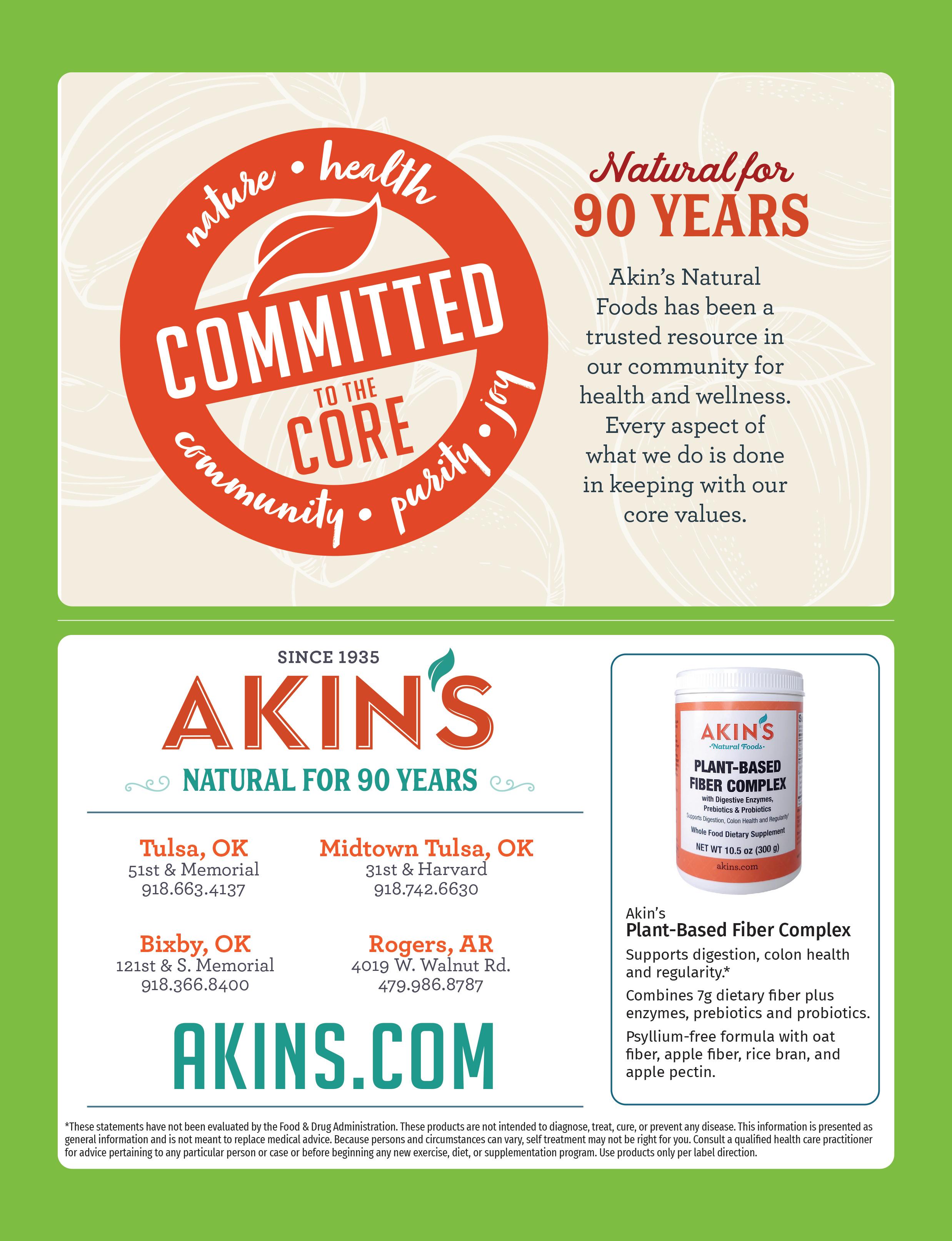summer sips cool

inside
Blood sugar control
Support a healthy gut
All about aloe
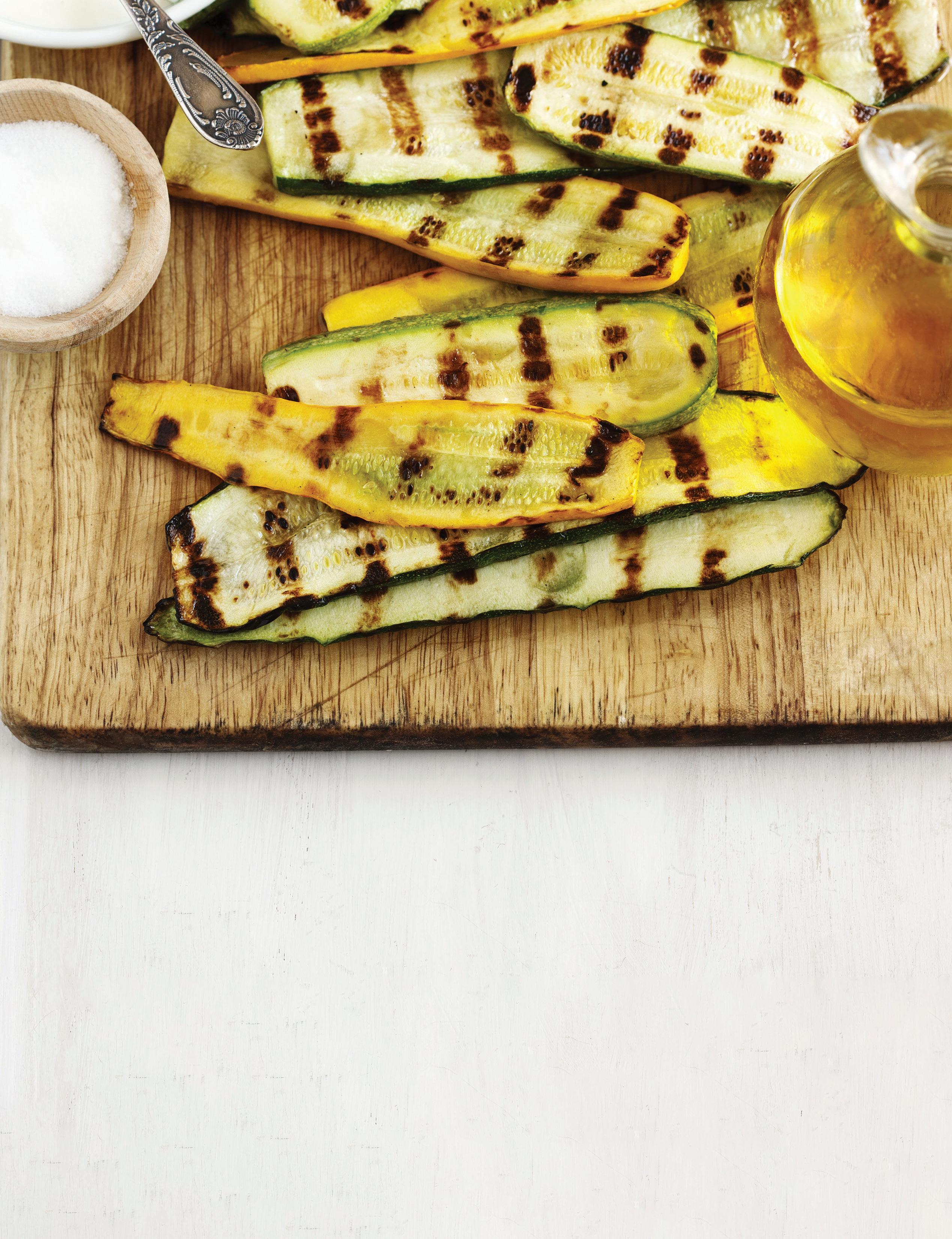


Blood sugar control
Support a healthy gut
All about aloe

Summer squash is a catch-all name for squashes that have tender skins and a shorter shelf life than their winter counterparts. Summer squashes include varieties like zucchini, yellow squash, crookneck, and pattypan.
Summer squashes are composed almost entirely of water, which means they are very low in calories. Summer squashes also boast a good amount of vitamin C, fiber, magnesium, and potassium, plus antioxidants that help protect against chronic diseases.
While summer squashes are technically fruits, they are most often prepared like vegetables. Zucchini can be spiralized and used in place of pasta noodles. Many types of summer squash can be diced and tossed into stir fries or tacos, grated and then added to baked goods and fritters, or blended into smoothies. They can also be sliced and enjoyed with hummus or veggie dip or added to sandwiches.
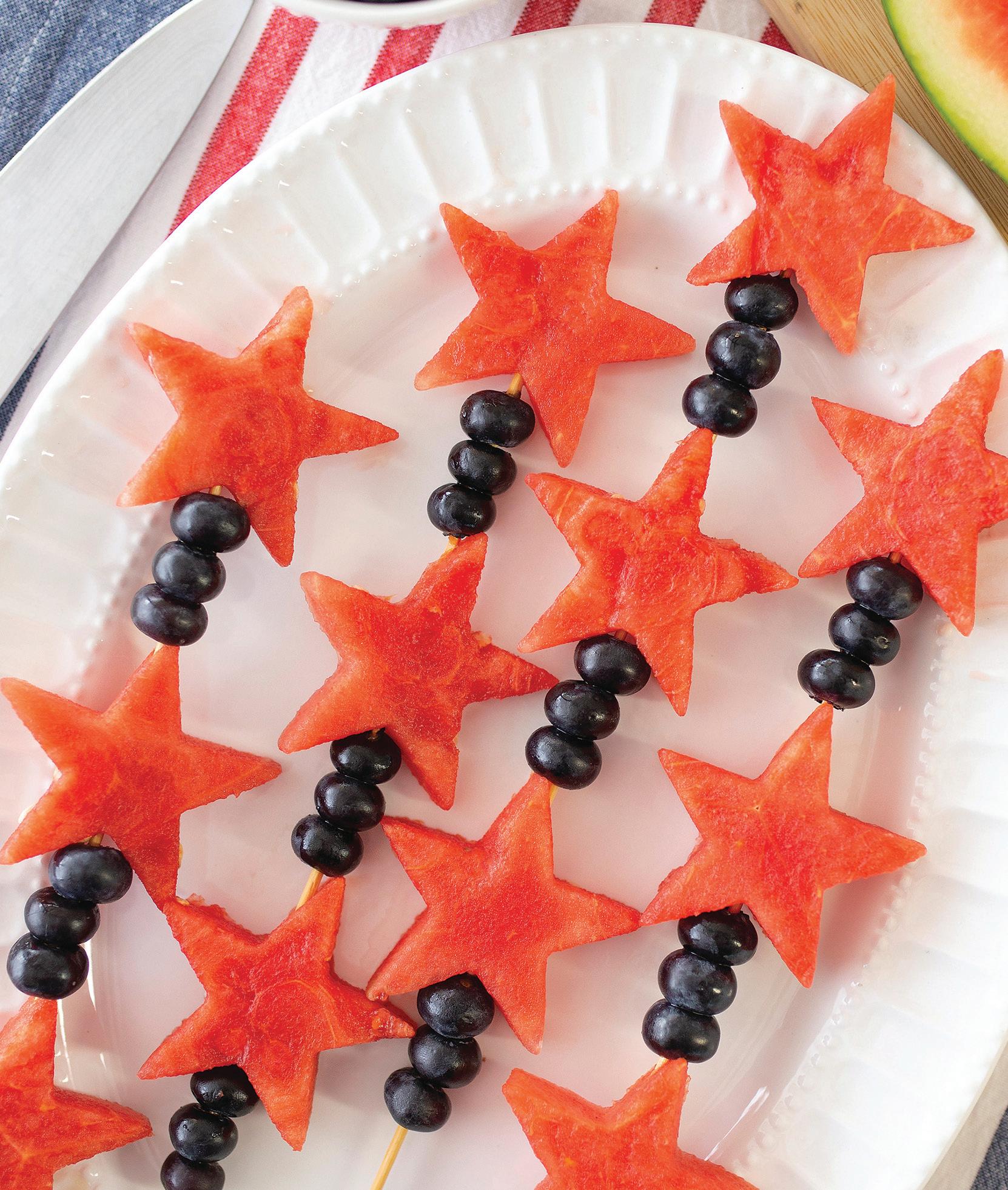

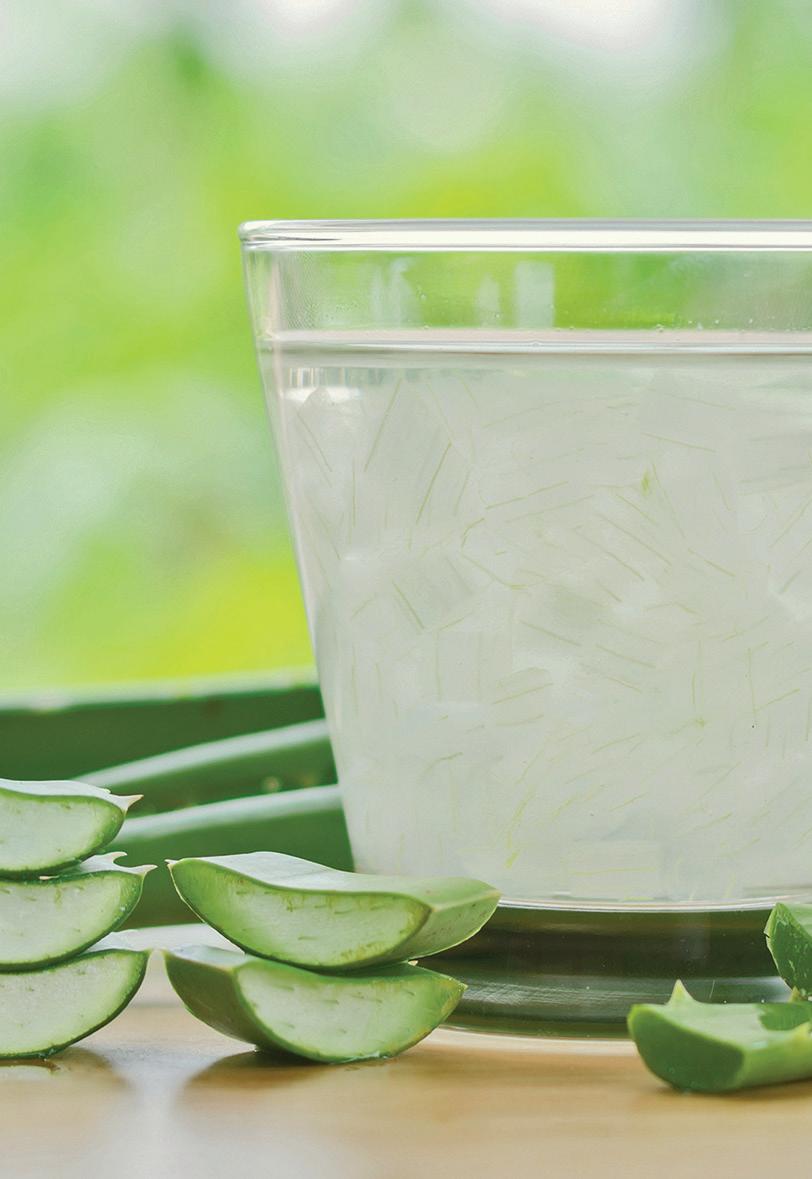

Nutrition for exercise recovery
Omega 3s show promise for prostate cancer
Stay active for healthy BP • More
Lemon and Herb
Chicken Thighs
Natural ways to lower your diabetes risk.
Rice and beans are a winning combo.
Lower your risk of cognitive decline.
Natural ways to soothe inflammation.

And fire up the grill for a Fourth of July cookout! We have recipes, beginning on page 12, to enhance the happy memories of your backyard barbecue. Try the lemon and herb marinated chicken thighs, surrounded by yummy takes on potato salad and a Dijon three bean salad, and finish with skewers of fresh fruit.
You may keep aloe handy for burns, scrapes and other external injuries, but did you know that this plant also has a wealth of internal uses? We talk about it on page 25. To keep your digestive tract humming along, there’s a new probiotic kid on the block: See page 24 for certified nutritionist Sally Karlovitz’s introduction to Akkermansia.
Summer is a great time to evaluate your overall well-being, and we’re ready to help with articles to help you maintain blood sugar control (page 17), sound joints (page 22) and thyroid health (page 28).
Of course, the brain is responsible for keeping all the internal systems of the body running smoothly, so you’ll want to prevent conditions including Alzheimer’s disease and other dementias. We outline strategies to protect the brain as it ages (page 20), including lifestyle factors, dietary changes and supplements that may support memory and cognition.
Check out page 2 for the lowdown on nutritious and delicious summer squashes that can add flavor and color to your grilled meals. Our Market Gourmet department on page 5 features ripe seasonal berries.
Different combinations of rice and beans (page 18) can be the mainstay of hearty, healthy menus. And if you’re looking for the perfect summer beverages, check out the article on cold-brewed teas and coffee (page 26).
Enjoy a happy Independence Day!

Contributing Writers
Mary Ann O’Dell MS, RDN
Sally Karlovitz CN
Chief Content Officer and Strategist Lynn Tryba (Lynn.Tryba@TasteforLife.com)
Contributing Editors
Lisa Fabian, Rich Wallace
Associate Editor
Kelli Ann Wilson
Creative Director
Michelle Knapp
Production/Graphic Designer
Brian Jenkins
Chief Operating Officer
Amy Pierce
Customer Service 800-677-8847
CustomerService@TasteforLife.com
Client Services Director - Retail Judy Gagne (x128)
Client Services Director - Advertising & Digital Ashley Dunk (x190)
Vice President – Retail Sales and Strategic Partnerships
Anna Johnston (Anna.Johnston@TasteforLife.com)
Chairman and Founder T. James Connell
Taste for Life® (ISSN 1521-2904) is published monthly by CCI, 155 Washington Street, Keene NH 03431, 603-283-0034 (fax 603-676-7941); © 2025 Connell Communications, Inc. All rights reserved. Subscription rates: $29.95. This magazine is not intended to provide medical advice on personal health conditions, nor to replace recommendations made by health professionals. The opinions expressed by contributors and sources quoted in articles are not necessarily those of the editor or the publisher. Advertisers and advertising agencies assume liability for all content of advertising and for any claims arising therefrom. Information appearing in Taste for Life may not be reproduced in whole or in part without express permission of the publisher.
Creative and Sales Offices 155 Washington Street, Keene NH 03431 603-283-0034




Mary Ann O’Dell, MS, RDN
Fom Just Add Sprinkles by Taryn Camp ($22.99, Page Street Publishing Co., 2025)
1 (16 oz) bag frozen strawberries, thawed
1½ Tbsp lime juice
¼ c granulated sugar
1 c water
Lime slices and sanding sugar, for garnish (optional)
1. Add strawberries to a food processor, and blend them into a purée.
2. Place strawberry purée in a large pot along with lime juice, sugar, and water. Begin to heat pot over medium-high heat. Bring mixture to a boil, and then reduce heat to medium or medium-low, and allow mixture to simmer for 10 minutes.
3. Remove mixture from heat and strain out strawberry seeds with a mesh strainer into a shallow freezer-safe dish. Place a lid on dish or cover tightly with plastic wrap, and place it into the freezer overnight.
4. When ready to serve, remove it from the freezer, and with a sturdy fork, scrape frozen mixture to create slush. You will want
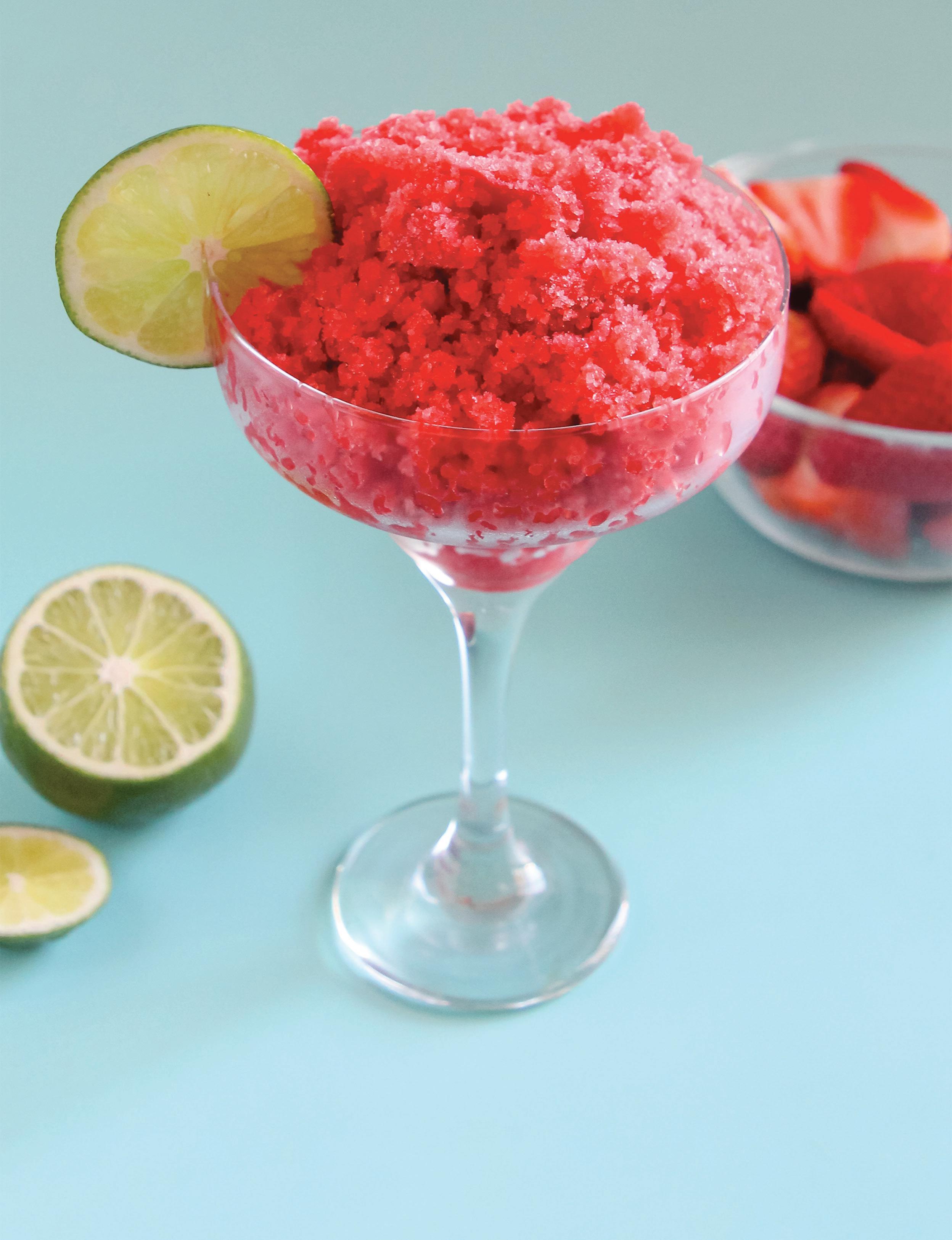
20 min prep time + overnight chill time serves 3
to work fast as slush will start to melt. If you notice mixture thawing too fast, pop it back into the freezer. Repeat until finished and scoop into glasses. Serve right away with lime slices on the side and topped with sanding sugar, if using.
Kitchen Note: Not a strawberry fan? No problem! You can easily adapt this recipe with your favorite frozen berry or tropical fruit. How about cherry lime or maybe even blueberry lemon?
Per serving: 115 Calories, 1 g Protein, 0 mg Cholesterol, 29 g Carbohydrates, 24 g Total sugars (16 g Added sugars), 3 g Fiber, 0 g Total fat (0 g sat), 2 mg Sodium, ★★★★★ Vitamin C
Making smart food and supplement choices after an exercise session is essential for muscle repair, hydration, inflammation control, and other health factors. A new study offers suggestions for optimal options.
“Evidence highlights the benefits of functional foods like tart cherry juice (anthocyanins), turmeric-seasoned foods, and sources of omega-3 fatty acids, including fish, flaxseeds, chia seeds, and walnuts, for mitigating oxidative stress and inflammation,” the authors wrote. They also noted the importance of probiotics and prebiotics for gut health and immune function.
SOURCE “From food supplements to functional foods: Emerging perspectives on post-exercise recovery nutrition” by L. Wang et al., Nutrients, 11/27/24

A diet rich in omega-3 fatty acids contributed to lower levels of cancer-cell proliferation in prostate cancer patients. The men were undergoing “active surveillance” for the disease, which entails regular monitoring but not immediate intervention.
Participants followed a high-omega-3, low omega-6 diet and received fishoil supplements over the course of a year.
“Our findings suggest that something as simple as adjusting your diet could potentially slow cancer growth and extend the time before more aggressive interventions are needed,” said researcher William Aronson, MD.
SELECTED SOURCES “A low omega-6, omega-3 rich diet and fish oil may slow prostate cancer growth, UCLA study finds,” University of California-Los Angeles Health Sciences, 12/13/24 • “High omega-3, low omega-6 diet with fish oil for men with prostate cancer on active surveillance . . .” by W.J. Aronson et al., Journal of Clinical Oncology, 12/13/24
Young adults are sitting too much.
“Between long commutes, Zoom-packed workdays, and evenings of streaming and scrolling, millennials now spend more than 60 hours per week sitting,” according to the authors of a new study. Those hours in a chair are raising the risks of heart disease “and accelerating other signs of aging.”
Meeting the minimum recommended exercise level of 20 minutes a day isn’t enough to overcome those hazards, the authors concluded. They determined that reduced sitting time “appears paramount.”
“Our research suggests that sitting less throughout the day, getting more vigorous exercise, or a combination of both may be necessary to reduce the risk of premature aging in early adulthood,” said senior author Chandra Reynolds, PhD.
The study had more than 1,000 participants, with an average age of 33. Many of the subjects were identical twins, which the researchers said made it easier to discern the effects of lifestyle compared to genetic factors.
SELECTED SOURCES “Prolonged sitting can sabotage health, even if you’re young and active,” University of Colorado at Boulder, 11/4/24 • “A twin-driven analysis on early aging biomarkers and associations with sitting-time and physical activity” by R. Bruellman et al., PLOS ONE, 9/11/24


Hourly physical activity lowers the risk of high blood pressure, according to a multiyear study. An average of 10 minutes of light exercise every hour led to systolic readings that were about 4 points better compared to participants who did not meet the exercise quota. Diastolic numbers were also lower.
About 2,500 children joined the study at age 11, with follow-up readings taken periodically until they reached age 24.
“At least three hours of [light physical activity] per day is critical to preventing and reversing elevated blood pressure and hypertension,” said researcher Andrew Agbaje, MD. He gave examples of such activities as walking, cycling, swimming, and doing household chores. Dr. Agbaje noted that elevated blood pressure in adolescence raises the risk of premature cardiac damage in later years.
SELECTED SOURCES “Breaking every hour of sedentary time with 10 mins of light exercise significantly reduced blood pressure,” University of Eastern Finland, 11/14/24 • “Lean mass longitudinally confounds sedentary time and physical activity with blood pressure progression in 2513 children” by A.O. Agbaje, Journal of Cachexia, Sarcopenia and Muscle, 11/13/24
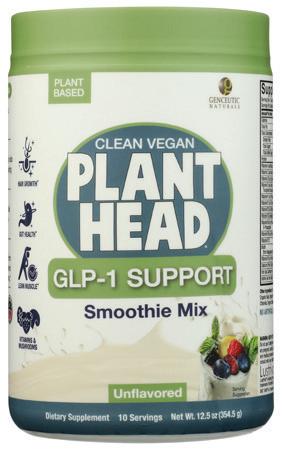
Designed to complement GLP-1 therapy, this formula helps address common challenges including hair loss, muscle loss, and digestive discomfort.* It includes plantbased protein, fiber, probiotic, and synergistic nutrients to support muscle health, gut balance, hair growth, and overall nutrition.*
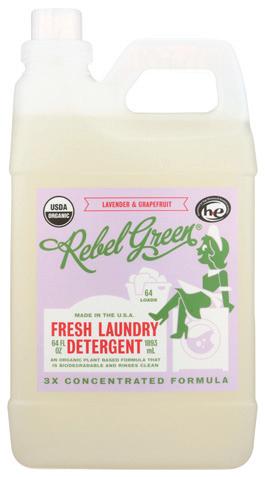
An eco-conscious answer to tackling life’s messes, this plant-based laundry formula is free from phosphates, synthetic fragrances, petrochemicals, and dyes, ensuring that only the purest ingredients touch your clothes – and your skin. Kissed with the scent of lavender and grapefruit essential oils.

This high potency cognitive formula supports various aspects of brain function.* Get smooth, sustained energy and alertness from caffeine and L-theanine.* Support memory and recall with bacopa and ginkgo biloba.* Find stress relief and mood balance with rhodiola and N-acetyl L-tyrosine.*
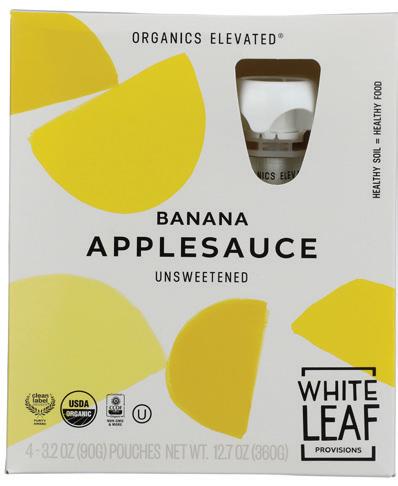
Regeneratively farmed organic applesauce—now in convenient pouch form. This Clean Label Certified applesauce has no added sugars, flavors, or colors. It’s just delicious, fresh flavor from the most popular fruits!
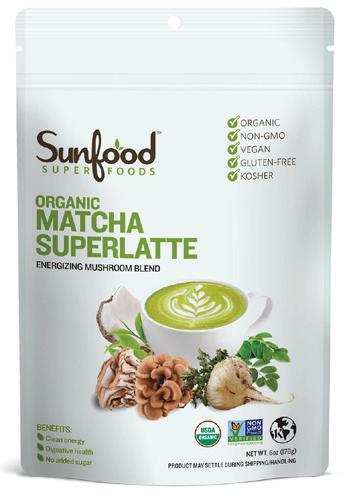
Supercharge your matcha with this earthy, creamy blend powered by balancing maitake mushrooms, maca, moringa, and matcha to boost metabolism.* Coconut milk adds its own creaminess so you can just mix with 2 oz hot water and enjoy, or add hot or cold milk of choice for a super creamy boost.
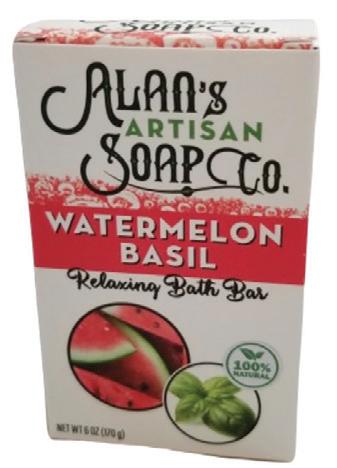
Quick to lather, soft to the touch, and rinsing away clean, this soap leaves only the light scent of natural fragrances. Alan was born with a rare genetic disease that left his skin sensitive to artificial ingredients, leading his family to develop a soap for him. The company also provides workplace opportunities for people with special needs. Read Alan’s scent story on each bar.
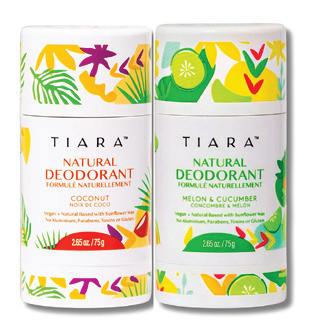
Tiara was created with one mission: to protect families from harmful ingredients found in everyday personal care products. After losing her grandmother and aunt to breast cancer, founder Zuly Matallana began a journey to create safer, more sustainable alternatives, including aluminum free, toxin free, vegan deodorant that works! Safe and gentle for daily use.

For superfood snacking at its finest, try Popadelics. These vacuum fried shiitake mushrooms offer rich, savory flavor that is surprisingly vegan. Vacuum frying keeps the temperature lower and uses less oil than conventional frying, keeping the nutrients, but giving you flavor and crunch without the guilt!







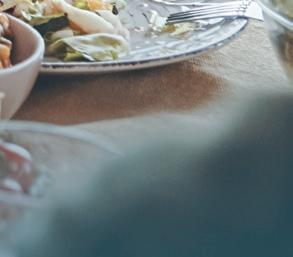








We’re committed to serving nothing but the best to our local communities, never o ering products with artificial colors, flavors and sweeteners, and always lending personalized help whenever you need it. That’s truly natural goodness you can’t find anywhere else.


“Regularly add collagen to your diet.” Why?
When it comes to feeling good and looking good, I am going to share my secret weapon… it is called Total Body Collagen™. Collagen hydrates our skin, reducing wrinkles and giving us that plump youthful glow. It also supports healthy hair.
– JULIE REIL , MD and Beauty Expert


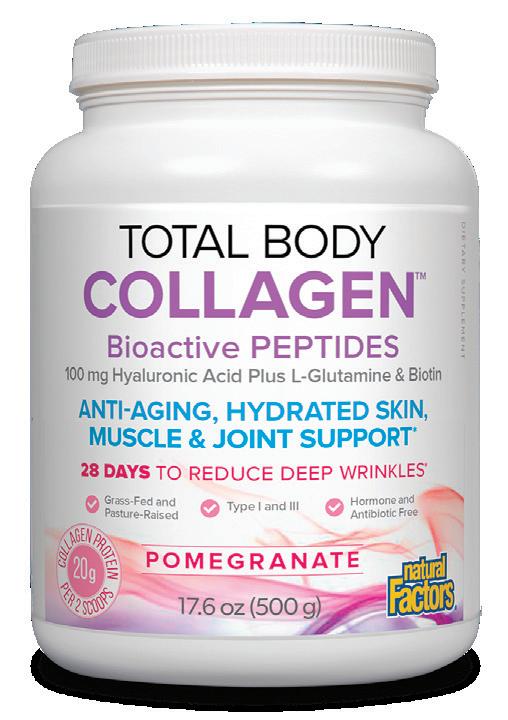
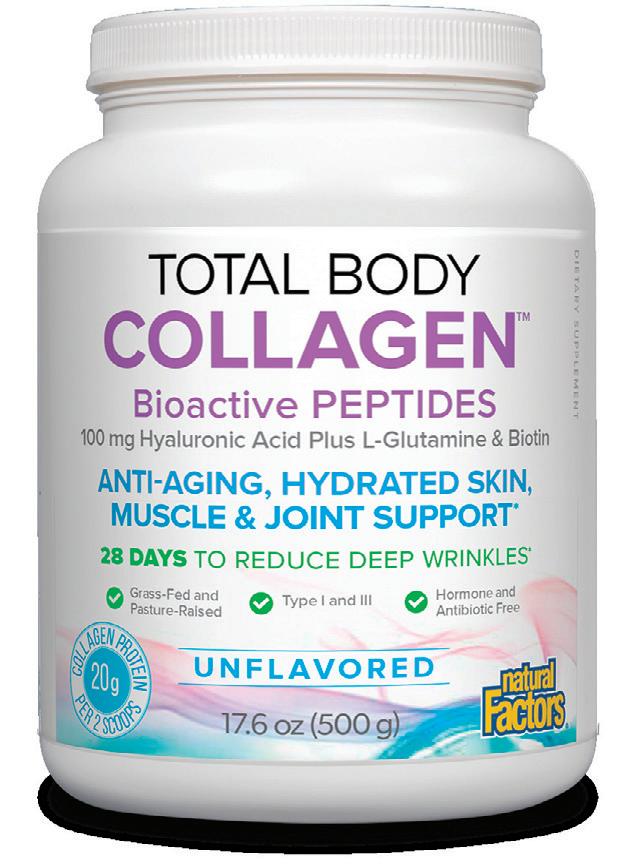
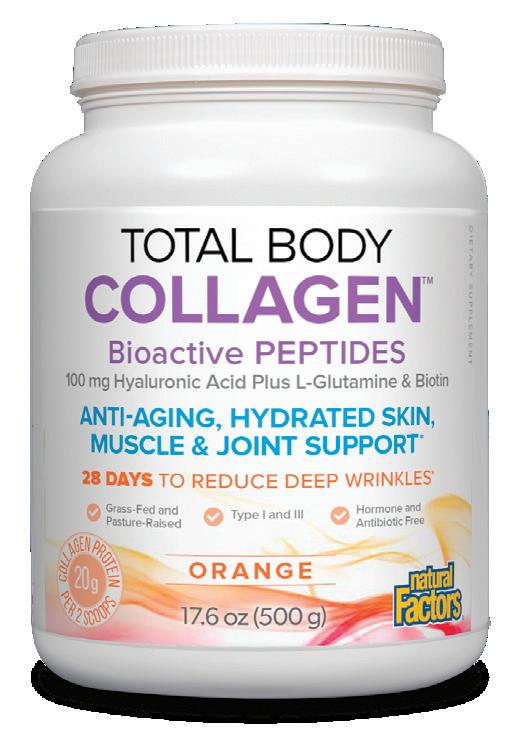




BY LISA FABIAN
a July 4th cookout

Whether you’re hosting a celebration
or
bringing a dish someplace else, these recipes have you covered. Happy Independence Day!
From Celebrating Every Day by Melissa Johnson ($35, Harvest, 2025)
1 large seedless watermelon
2 pints large blueberries 20 (12 inch) wooden skewers
1. Cut watermelon into ¾-inch-thick slices.
2. Cut star shapes out of watermelon slices using a small star cookie cutter.
3. Slide a watermelon star and 3 blueberries onto a skewer, leaving a few inches of space at bottom of handle. Alternate watermelon and blueberry until you reach top of skewer.
20 min prep time makes 20 skewers
Kitchen Note: This two-ingredient fruity treat is splendid for a hot summer day and especially for the Fourth of July. The skewers make it feel like you’re holding a wand. They’re healthy, inexpensive, and oh, so festive!
serving (2 skewers):

30 min prep time + 30 min marinate time serves 6
From The Meat Teacher by Matt Groark ($36, Harper Influence, 2025)
½ c extra-virgin olive oil
¼ c lemon juice
4 cloves garlic, minced
2 Tbsp chopped fresh rosemary
2 Tbsp chopped fresh thyme
2 Tbsp chopped fresh basil Kosher salt and freshly ground black pepper
8-10 boneless, skinless chicken thighs
1. Make marinade: Whisk together oil, lemon juice, garlic, rosemary, thyme, and basil in a large bowl. Season with salt and pepper.
2. Add chicken thighs to bowl with marinade and move them around to evenly coat. Cover and refrigerate for at least 30 minutes or up to 2 hours. Alternatively, you can marinate chicken in a zip-top bag and save yourself some cleanup.
3. Preheat grill to medium-high heat. Take chicken thighs out of marinade and season with a little salt and pepper. Set chicken thighs on preheated grill and cook for 10 to 12 minutes, flipping every minute. Serve immediately.
Kitchen Note: Lemon and herb is a classic flavor combination that tastes great on a number of proteins. It works especially well with poultry. This marinade can be used on any cut of chicken and is even excellent on pork. The grill will give the chicken thighs in this recipe a nice char, but they’d also taste great pan-seared. Serve these as the star of a meal, slice them up on top of a salad, or stuff them in a wrap.
Per serving (made with 8 chicken thighs): 396 Calories, 38 g Protein, 179 mg Cholesterol, 2 g Carbohydrates, 0 g Total sugars (0 g Added sugars), 0 g Fiber, 26 g Total fat (5 g sat), 376 mg Sodium, ★★★★★ Vitamin B3 (niacin), B6, Phosphorus, ★★★★ Vitamin B12, ★★ Vitamin B2 (riboflavin), E, Zinc, ★ Vitamin B1 (thiamine), K, Iron, Magnesium, Potassium

From There’s Always Room at the Table by Kaleb Wyse ($35, Harvest, 2025) Kosher salt
1 lb fresh green beans, trimmed
1 clove garlic, minced
1 Tbsp Dijon mustard
2 tsp honey
½ tsp freshly ground black pepper
2 Tbsp white wine vinegar
4 Tbsp extra-virgin olive oil
1 (15 oz) can red kidney beans, drained and rinsed
1 (15 oz) can chickpeas, drained and rinsed
½ red onion, sliced
1. Set up a large bowl of ice water and have it near the stove.
2. Bring 3 quarts of water to a boil. Add 1 tablespoon salt and green beans. Boil for 2 minutes. Remove beans from water and plunge them into prepared ice water. Stir beans until they are fully chilled, about 6 minutes. Drain beans and set them aside to dry.
3. In a small bowl, whisk together garlic, mustard, honey, ½ teaspoon salt, the black pepper, vinegar, and oil. Whisk until vinegar and oil are emulsified. Set dressing aside.
4. Cut green beans into thirds and place them in a bowl. Add kidney beans, chickpeas, and red onion.
5. Pour on dressing, toss, and serve.
Kitchen Note: This is a more flavorful take on the classic three-bean salad, which is a mixture of kidney beans, wax beans, and green beans. In the traditional dish, the dressing tends to be overly sweet and lacking in actual flavor. With just a few tweaks, this salad emerges as a satisfying departure from the norm. Instead of canned green beans, fresh ones are blanched for a crisper texture. Chickpeas are featured instead of wax beans, and the dressing results in a vibrant vinaigrette in this revamped version.
40 min prep time serves 6
50 min prep time + 1 hr chill time
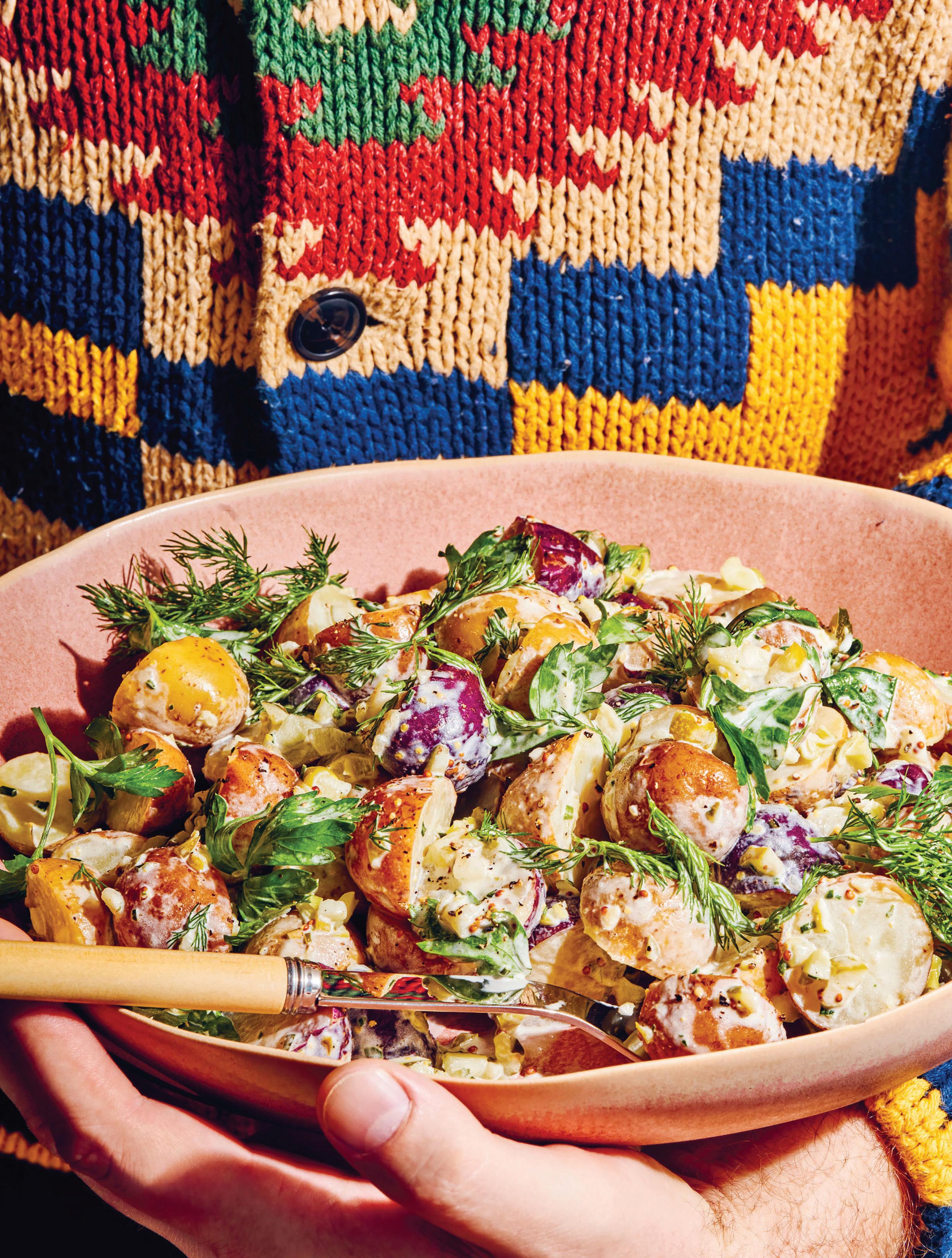
From What Can I Bring? by Casey Elsass ($30, Union Square & Co., 2025)
serves 8 3 lb baby creamer potatoes (two 24-oz bags), preferably in a mix of red, yellow, and purple
1 Tbsp plus 1 tsp kosher salt
1 c dill pickles plus ¼ c pickle brine from the pickle jar
10 pepperoncini plus 2 Tbsp pepperoncini brine
2 Tbsp white wine vinegar
½ tsp celery seeds
1 bunch chives
1 c mayonnaise*
2 Tbsp grainy mustard or spicy brown mustard
1 tsp freshly ground black pepper
½ c loosely packed fresh parsley leaves, plus more for garnish
½ c loosely packed fresh dill fronds, plus more for garnish
1. In a large Dutch oven, combine potatoes, 1 tablespoon of the salt, and 8 cups cold water. Set over high heat and bring to a boil, about 10 minutes. Once bubbles are starting to pop all over surface, set a timer for 8 minutes. When timer goes off, use a spoon to remove a couple potatoes; if a paring knife slides in and right back out with no effort, you’re good to go. If not, give them 2 more minutes before testing again.
2. Drain potatoes, but don’t rinse. Let them sit for about 5 minutes until you can comfortably cut them in half. Throw halved potatoes in a large bowl and while they’re still warm, toss with pickle brine, pepperoncini brine, vinegar, celery seeds, and remaining 1 teaspoon salt. Let potatoes cool completely and absorb those flavors, about 1 hour.
3. When potatoes are cool, finely chop pickles, pepperoncini, and chives. Add them to bowl with mayonnaise, grainy mustard, and black pepper, and fold everything together. Add parsley and dill and lightly toss to mix.
4. Pile potato salad in a serving bowl, and then garnish with more parsley and dill before serving.
*A simple swap to vegan mayo makes this 100 percent plant-based.
Kitchen Note: If you’ve been dying to have a killer potato salad in your arsenal—and really, everyone should—this recipe will help get you on the right track. If you’re making this ahead, cover with plastic wrap and refrigerate for up to 2 days. (Not a bad idea; the flavor only gets better over time.) Let this dish sit, covered, at room temperature for 30 minutes before serving. When taking this potato salad to a party, wrap some herb leaves in damp paper towels and bring them along for a garnish.
Per serving: 343 Calories, 4 g Protein, 11 mg Cholesterol, 32 g Carbohydrates, 2 g Total sugars (0 g Added sugars), 4 g Fiber, 23 g Total fat (3 g sat), 567 mg Sodium, ★★★★★ Vitamin C, K, ★★★★ Vitamin B6, ★ Vitamin B1 (thiamine), B3 (niacin), Iron, Magnesium, Phosphorus, Potassium


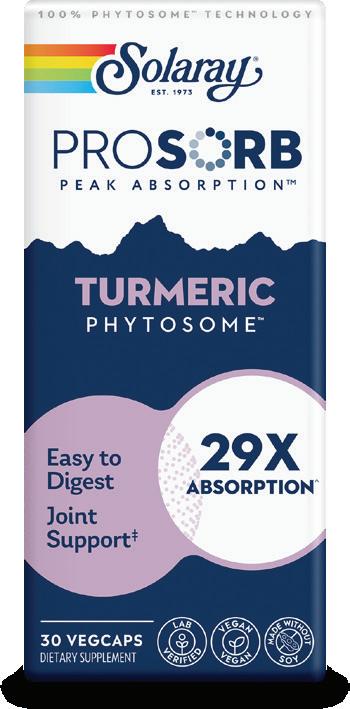
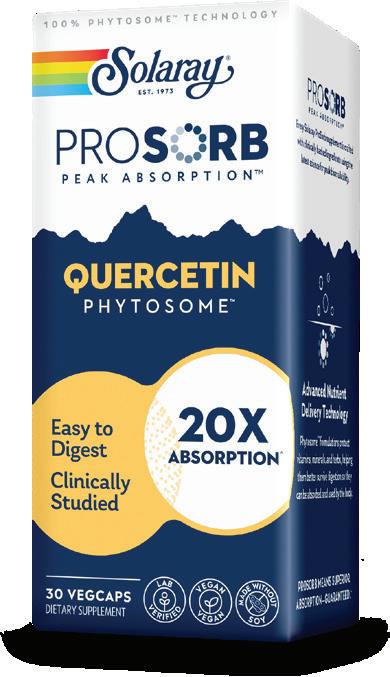
BY MARY ANN O’DELL, MS, RDN
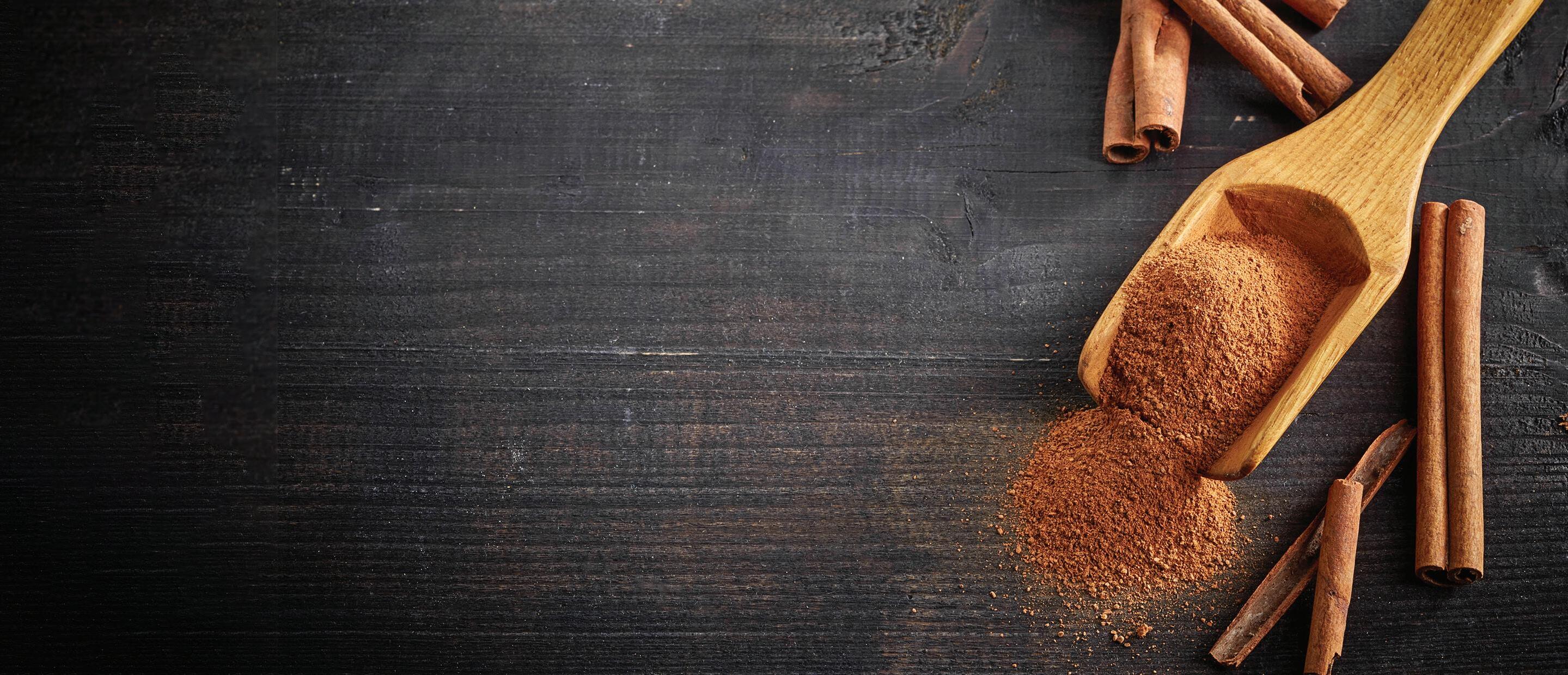
The American Diabetes Association estimates that there will be 53.1 million people with diabetes in the United States in 2025, including both diagnosed and undiagnosed cases. Diabetes and uncontrolled blood sugar levels can lead to a variety of complications including heart disease, stroke, kidney failure, blindness, and circulation problems. The good news is that the risk of developing diabetes and its complications can be reduced with a healthy, whole foods diet and a consistent exercise program. Beyond diet and exercise, there are botanicals that have garnered interest for their roles in blood sugar control.
While berberine is commonly considered an herb, it is not actually an herb, but a plant alkaloid found in a variety of herbs including goldenseal, barberry, Oregon grape, coptis (goldenthread), and other Berberis plants.
Berberine is commonly used to support healthy blood sugar control. A research review of 14 studies found that berberine lowered blood sugar levels and was even considered to be as effective as some common blood sugar medications. Another role berberine has is

BIOptimizers
Berberine
Blood sugar support complex.*
May help curb sugar cravings.*
Synergistic blend with berberine, bitter melon, alpha lipoic acid, and more.
activation of AMP-activated protein kinase (AMPK), an enzyme which may also enhance blood glucose control and healthy metabolism. It is this activity that has linked berberine to GLP-1, since one of the ways GLP-1 works is by activating an AMPK pathway.
Cinnamon is rich in antioxidant polyphenols, plant compounds that appear to help regulate blood sugar levels. Studies have found that cinnamon may help reduce the rise in blood sugar that occurs after eating. Results of one study found that subjects with Type 2 diabetes taking a daily 2 gram (g) dose of cinnamon had decreased blood pressure and decreased HbA1C levels. Cinnamon has also been shown in other research to help lower cholesterol and triglycerides, blood fats that may increase diabetes risk.
After discussion of these suggestions with a health care provider, these natural approaches can give an extra boost to a diabetic or prediabetic lifestyle, helping people get control of their blood sugar and take control of their health. ●

Dr. Mercola Organic Fermented Cinnamon
Promotes overall metabolic and blood sugar health.*
Supports optimal digestion.*
Clean formula without harmful synthetic pesticides or genetically engineered ingredients.

Beans and other legumes are commonly eaten with grains like rice. While this traditional dish is popular all over the world for its affordability and flavor, rice and beans also offer a host of health benefits, including lowering the risk of serious diseases.
When combined, they form a complete protein, making them a healthy meal option for vegans and vegetarians.
Canned beans are convenient, but when preparing a large amount, you may want to buy dried beans and cook them yourself. Dry beans also cost less per serving than canned beans, although both types are affordable plant-based protein options.
The first thing to do when cooking dried beans is to spread them out and remove any stones, dirt clumps, or broken beans. Next rinse and drain the beans in a colander. Add them to a large bowl with plenty of water (about 3 times as much water as beans), and soak overnight in the fridge.
After an overnight soak, place beans in a pot with their soaking water. Top with additional water, if necessary, so beans are covered by one inch of water. Add desired flavorings (bay leaves, fresh garlic, or fresh herbs like sage or rosemary), turn on the heat, and cook the beans until tender.
Since rice is typically cleaned when it’s milled, removing stones and dirt (as with beans) is usually not necessary. But you may wish to rinse rice before preparing it.
Consider coating the rice grains in fat (butter or oil) before cooking. When the grains are sautéed in a fat before the cooking water is added, it helps prevent them from sticking and clumping together.
Be sure there is no excess liquid remaining in the pot after cooking rice. If there is, the rice is not done yet. Allow the rice to sit for a few minutes before serving to help it firm up.
Versatile and easy to work with, many types of grains pair perfectly with beans and legumes. Try matching rice with lentils, quinoa with black beans, or millet with chickpeas. ●
SELECTED SOURCES “Dry vs. canned beans: Which is better?” Northarvest Bean Growers Association, www.BeanInstitute.com • “Grains and legumes: Cooking for great flavor,” Chef Bill Briwa, Everyday Gourmet: Rediscovering the Lost Art of Cooking, www.TheGreatCourses.com • How to Cook Everything by Mark Bittman ($35, Wiley, 2008)

55 min prep time serves 4
From What to Cook When You Don’t Feel Like
Cooking by Caroline Chambers ($35, Union Square & Co., 2024)
2½ c low-sodium vegetable or chicken stock
1 (12 oz) jar red or green salsa (mild or spicy, depending on preference)
1½ c long-grain white rice
1 (14 oz) can black or pinto beans, drained and rinsed
2 Tbsp tomato paste
1 tsp garlic powder
¼ tsp red pepper flakes
¼ tsp kosher salt, plus more as needed
1 c shredded Mexican cheese blend or Cheddar cheese
Toppings (optional): thinly sliced avocado, pickled jalapeños, chopped fresh cilantro, sour cream
1. In a large heavy-bottomed pot or skillet, combine stock, salsa, rice, beans, tomato paste, garlic powder, red pepper flakes, and salt. Place over high heat and bring to a boil. Stir to mix well and then reduce heat to low. Cover and cook until liquid is absorbed and rice is tender, 20 minutes.
2. Uncover, turn off heat, and give it another big stir—don’t worry if it’s a little stuck to the bottom! Taste and add more salt as needed.
3. Sprinkle cheese over top, cover, and let stand for 10 minutes, until cheese is melted.
4. Serve directly from pot and let people add whatever toppings they like!
Kitchen Note: An inflation-proof meal that stands the test of time? Rice and beans! Cooking the rice and beans together in the same pot makes this meal not only even easier, but also more delicious. You can throw the whole pot under the broiler if you want to brown the cheese (as long as you cook the dish in something oven-safe). You can also make burritos out of this dish! Instead of adding cheese on top, place a few tablespoons of cheese down the center of a burrito-size tortilla, load it with the rice and beans, and roll it up.
Per serving (recipe made with chicken stock, red salsa, black beans, Cheddar cheese, 1 avocado, pickled jalapeños, 1/2 cup cilantro, 1/2 cup sour cream): 702 Calories, 27 g Protein, 50 mg Cholesterol, 93 g Carbohydrates, 7 g Total sugars (0 g Added sugars), 15 g Fiber, 26 g Total fat (11 g sat), 1,062 mg Sodium, ★★★★★ Vitamin B1 (thiamine), B3 (niacin), Folate, Phosphorus, ★★★★ Vitamin B6, ★★★ Vitamin B2 (riboflavin), Calcium, Iron, Magnesium, Zinc, ★★ Vitamin A, B12, E, K, Potassium, ★ Vitamin C
Dementia is an umbrella term describing symptoms that interfere with the activities of daily living. They include “difficulties with memory, language, problemsolving and other thinking skills,” according to the Alzheimer’s Association.
Dementia risk increases with hearing loss, high blood pressure, lack of physical activity, use of alcohol and tobacco, and uncontrolled diabetes, according to the Centers for Disease Control and Prevention (CDC), which recommends developing “healthy lifestyle habits that can lower your risk of developing dementia, including Alzheimer’s disease.”
The CDC lists five habits that will help keep your brain healthy:
q Physical activity: at least 20 minutes per day (150 minutes per week) of vigorous activity is important for keeping the heart, body, and brain healthy.
r Prevent or manage Type 2 diabetes to avoid damage to the brain.
s Maintain a healthy weight and take prescribed blood-pressure medication to avoid damaging vessels that carry blood to the brain.
t Use hearing aids to treat hearing loss, which researchers believe makes the brain work harder (at the expense of thinking and memory).
u Avoid excessive consumption of alcohol and quit smoking to reduce dementia risk.
While there is no cure yet for Alzheimer’s disease, there are FDA-approved prescription drugs that can slow its progression and ease symptoms. The CDC notes, “Medications don’t work for everyone, and they may lose effectiveness over time.”
One way to protect your brain is by following the Alzheimer’s Prevention Diet, from the Alzheimer’s Research and Prevention Foundation, which recommends avoiding saturated and trans fats, which produce free radicals and can cause inflammation. Fight free radicals with foods rich in antioxidant vitamins C and E. Instead of red meat, choose fish for omega 3s and vegetarian protein substitutes.
Along with a diet that’s 20 percent healthy fats (olive oil, flaxseed oil, avocado), 40 percent lean protein (fish, chicken, soy), and 40 percent complex carbs (fresh fruit and vegetables, whole grains, legumes), eat brain superfoods including blueberries, spinach, and seaweed.
Taking a daily multivitamin/mineral supplement that contains folic acid and vitamins C and E supports and enhances memory. While more clinical research is needed, some research showed that ginkgo may be beneficial in improving cognitive function and vitamin E may slow functional decline in Alzheimer’s disease. ●
SELECTED SOURCES “4 Pillars of Prevention. “Pillar 1: Diet and Supplements,” Alzheimer’s Research & Prevention Foundation, https://alzheimersprevention. org • 2024 Alzheimer’s Disease Facts and Figures, Alzheimer’s Association, 2024 • “About Alzheimer’s”; “Reducing risk for dementia,” Centers for Disease Control and Prevention, www.cdc.gov • “Dietary supplements and cognitive function, dementia, and Alzheimer’s disease,” NCCIH Clinical Digest for Health Professionals, www.nccih.nih.gov, 7/22 • “Risk and future burden of dementia in the United States” by B. Doctrow, National Institutes of Health, NIH Research Matters, www.nih.gov, 2/18/25
A recent study in the Journal of Clinical Sleep Medicine found that sleep deficiency is associated with the development of Alzheimer’s disease.
The study, which involved 270 participants with a median age of 61 years, found that individuals who had spent less time in slow wave and rapid eye movement sleep had a smaller volume in the inferior parietal region and other critical brain regions after a period of 13 to 17 years. The inferior parietal region of the brain has been shown to experience early structural changes during the development of Alzheimer’s disease.
“Our findings provide preliminary evidence that reduced neuroactivity during sleep may contribute to

brain atrophy, thereby potentially increasing the risk of Alzheimer’s disease,” wrote lead author Gawon Cho, a postdoctoral associate at Yale School of Medicine.
While more research is necessary to fully investigate the link between sleep architecture and Alzheimer’s disease, the study highlights the importance of sleep quality for longterm brain health.
SELECTED SOURCES “Lower slow wave sleep and rapid eye movement sleep are associated with brain atrophy of AD-vulnerable regions” by G. Cho et al., Journal of Clinical Sleep Medicine, 3/31/25 • “New study links lower proportions of certain sleep stages to brain changes associated with Alzheimer’s disease,” American Academy of Sleep Medicine, www.
AASM.org, 3/31/25
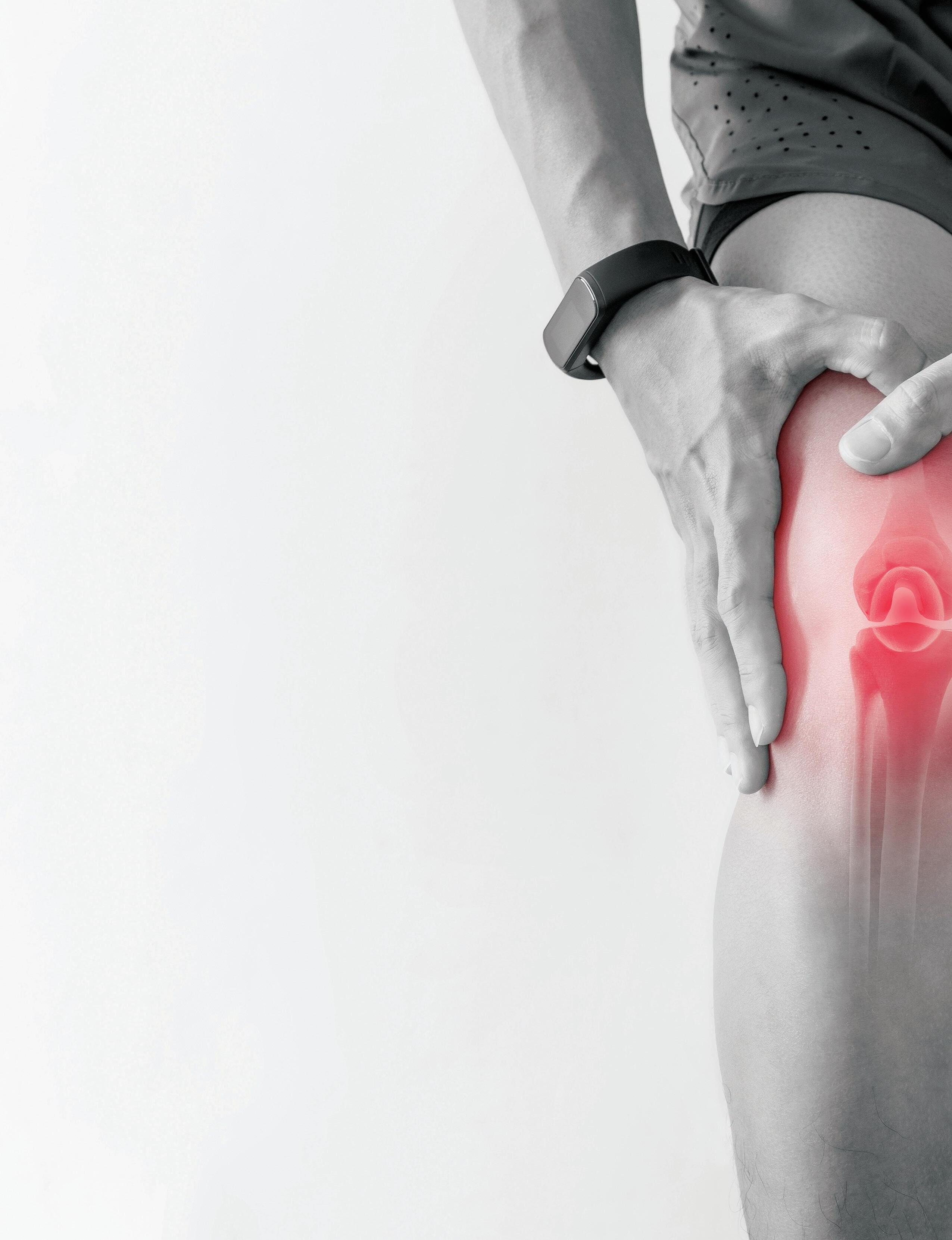
Over-the-counter painkillers like Tylenol and Advil are fast-working and convenient for treating the symptoms of an occasional headache but they’re not always the best answer to joint pain caused by arthritis. And NSAIDs, aspirin, and acetaminophen may present some risks when used long term or at high doses.
Fortunately, there are a number of natural alternatives to nonprescription medications that people dealing with chronic joint discomfort may want to consider. Here are some options to try.
Fatty acids found in fish and fish oil, nuts, and seeds, omega 3s are anti-inflammatory and can lessen joint stiffness and pain, as well as pain caused by conditions such as rheumatoid arthritis.
A recent review of studies noted that, due to their anti-inflammatory properties, omega 3s can help reduce pain and improve joint mobility and cartilage formation. They may also help slow the progression of osteoarthritis.
The Arthritis Foundation notes that probiotics can be particularly helpful for people with inflammatory types
of arthritis, who typically also suffer from inflammation of the intestinal tract. Clinical studies have found that probiotic supplements may ease the symptoms of rheumatoid arthritis by helping to bring the gut microbiome into balance, and by supporting a healthy immune response.
Various supplements also contain the building blocks of healthy joints and may decrease inflammation and, over the long term, support healthier joint structures. These include glucosamine, chondroitin, hyaluronic acid, collagen, gelatin/ cartilage, and bone broth made from animal joint bones.
Though the evidence is preliminary and mixed, some studies support the efficacy of several of these supplements for joint health; they work best when taken over a long period of time. ●
SELECTED SOURCES “The benefits of good gut health,”; “Popular supplements for arthritis: What you need to know,” Arthritis Foundation, www.Arthritis.org • “Omega-3 supplementation and its effects on osteoarthritis” by M. Shawl et al., Nutrients, 5/28/24 • “Rheumatoid arthritis and the intestinal microbiome: Probiotics as potential therapy” by Y. Yang et al., Frontiers in Immunology, 3/5/24 • “Supplements for joint pain: Helpful or harmful?” University of Maryland Medical System, https://health.umms.org, 9/27/23
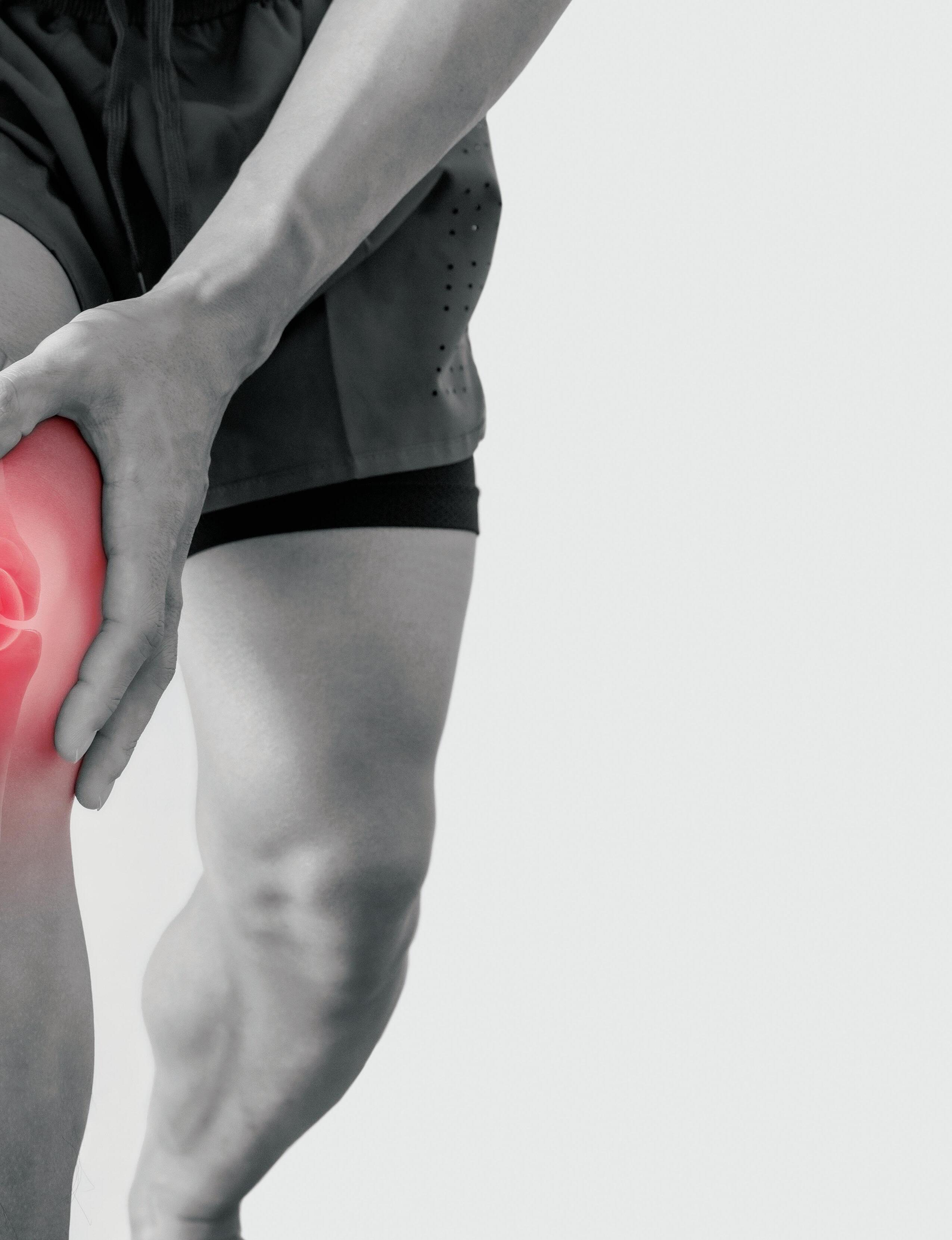
The Mediterranean diet has been shown to offer a variety of health benefits, including reducing blood pressure, protecting against chronic diseases, and supporting cardiovascular health. It may also help ease arthritis symptoms by lowering inflammation and aiding weight loss (which can take pressure off joints).
According to the Arthritis Foundation, foods found in the Mediterranean diet that support healthy joints include
✔ Fish and seafood: Three to four ounces (oz) of fish—like tuna, sardines, anchovies, and scallops—twice a week.
✔ Nuts & seeds: 1.5 oz (about a handful) of nuts daily—top picks include almonds, pine nuts, pistachios, and walnuts.
✔ Fruit & vegetables: Nine servings daily is the goal when it comes to fruit and veg (one serving equals about one cup). Pack your plate with colorful produce like blueberries, broccoli, cherries, kale, and spinach.
✔ Healthy fats: Two to three tablespoons of unrefined oils like olive oil, avocado oil, and safflower oil may help lower inflammation and pain sensitivity.
✔ Beans & legumes: Red kidney beans and pinto beans are full of fiber and other key nutrients that may help to control inflammation. Aim to eat at least a cup of beans twice a week.
✔ Whole grains: Oats, brown rice, and quinoa are gluten-free grains with lots of healthy fiber. Eating at least three half-cup servings of whole grains per day can help support weight management and keep inflammation in check.
SOURCE “The ultimate arthritis diet” by A. Paturel, Arthritis Foundation, www.Arthritis.org
BY SALLY KARLOVITZ, CN

Most of us know about the gut microbiome, the vast collection of organisms that reside in our intestinal tract. The more we learn about the microbiome and how it affects health, the more we know how important it is to maintain the good bacteria that reside in the microbiome. Many are familiar with the common probiotics L. acidophilus and B. bifidus. The probiotic bacteria Akkermansia muciniphila (Akkermansia) may be the new kid on the block for most of us, but it’s not new in our gut. Akkermansia is just one of the many types of bacteria that live in the large intestine. As its name implies, it lives primarily in the mucus lining layer of the intestines.
Research is just beginning to show the potential benefits of this unique organism.
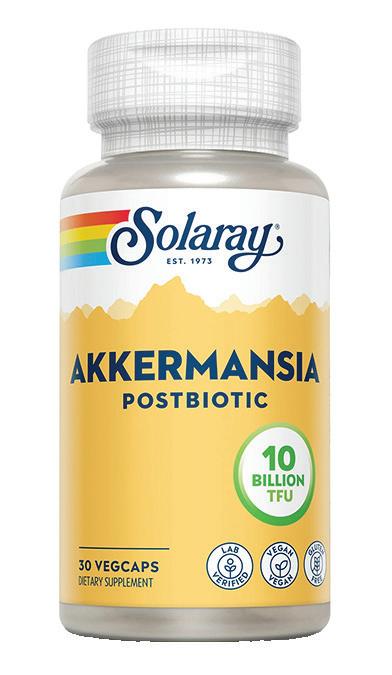
Solaray Akkermansia Postbiotic
Next-generation beneficial postbiotic strain for microbiome health.*
Delivers 10 billion TFU of Akkermansia mucinpiphila Akk11 per serving. Some research suggests many people are low in akkermansia.
✔ Gut Lining Integrity. Akkermansia feeds on the mucins in the intestinal lining, which can cause the gut to produce more mucus, enhancing the intestinal lining. This may benefit of people with an impaired intestinal lining, which is associated with leaky gut syndrome, inflammation, and even conditions like inflammatory bowel disease. It appears that Akkermansia may help protect against these negative actions.
✔ Metabolic Health. Research suggests that people with higher levels of Akkermansia have lower rates of excess weight gain. It is believed that Akkermansia may help increase levels of GLP-1 (glucagon-like peptide 1), a hormone that helps with blood sugar and weight regulation. Small studies have demonstrated that Akkermansia could help lower blood sugar levels in Type 2 diabetes and help reduce inflammation in overweight people.
✔ Resilience with Dietary Changes. Unlike other probiotics that require fiber for food, Akkermansia has a supply of food within the gut lining. Because of this, its levels seem to remain steady even when there are dietary changes, including intermittent fasting, or keto or paleo diets.
So we see there are some good benefits of Akkermansia as a probiotic (living organism) and a postbiotic (beneficial metabolite from living organisms). One way to boost Akkermansia levels naturally is to eat foods rich in antioxidant polyphenols, including berries, leafy green vegetables, onions, nuts, seeds, tea, and other antioxidant-rich foods. Akkermansia is also now available in concentrated levels in supplement form. ●
BY MARY ANN O’DELL, MS, RDN
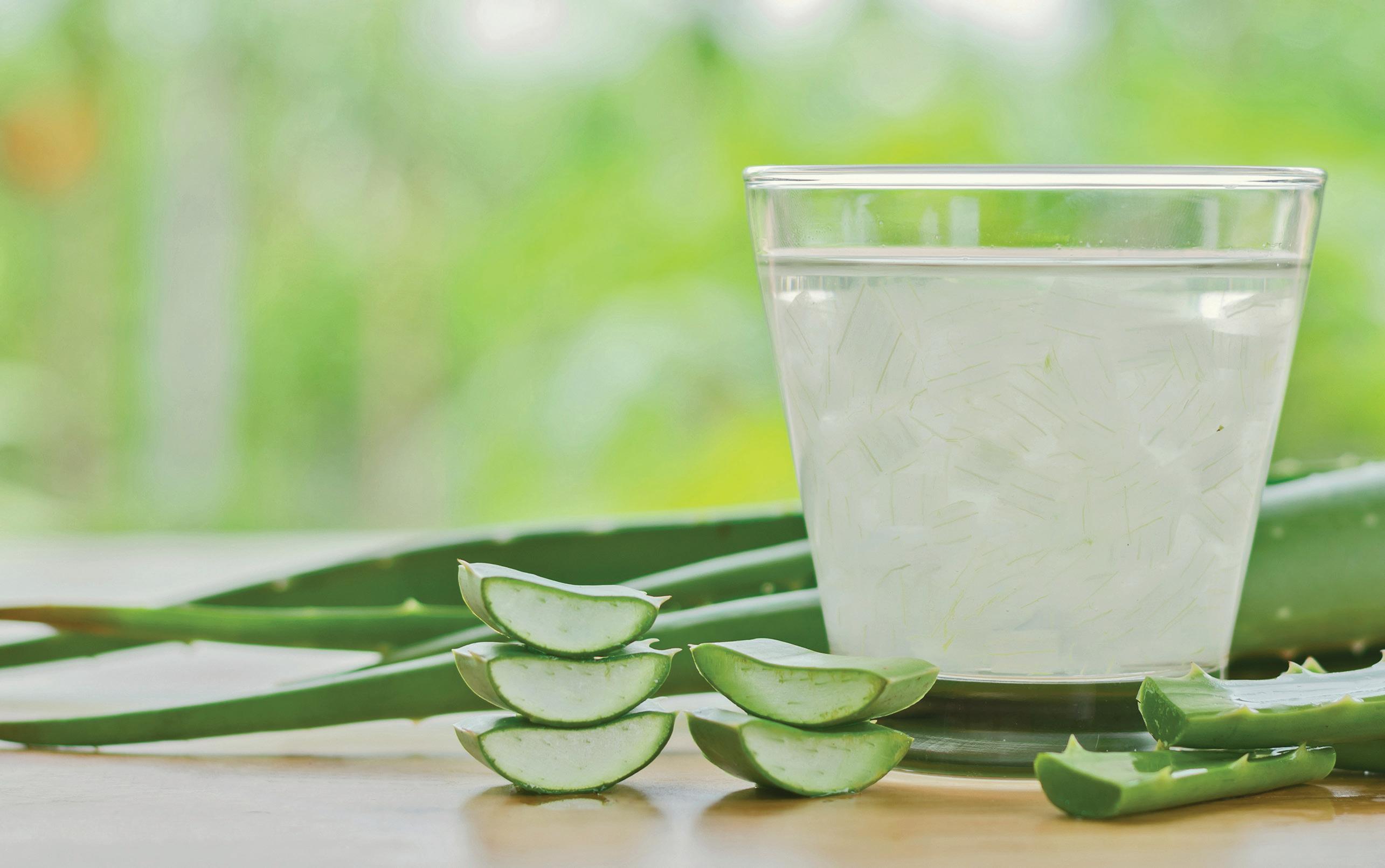
Aloe vera has been called the “healing wonder” because of its uses for so many problems inside and outside the body. The aloe vera plant has been used medicinally for over 5,000 years. Aloe vera was used by the Greek physician Dioscorides for treatment of everything from constipation to burns. It has been used throughout history and is still used today, both topically and internally. For this article, we will focus on internal use of aloe vera.
Digestion Support. Aloe vera is naturally rich in enzymes, and it can help improve digestion. In addition, it can help provide relief from heartburn. Compounds present in aloe can help control acid release in the stomach. This action, along with its known soothing and anti-inflammatory properties, makes aloe vera juice a great option to keep on hand to help combat gastric ulcers.
Gut Health. Aloe vera juice is used internally to coat, soothe, and heal the intestinal tract. Because it has antiinflammatory properties, it can help calm inflammation in the esophagus, stomach, and gut. With this action, some people who have irritable bowel syndrome have found relief using aloe vera juice internally. Both aloe vera juice and aloe vera gel can support gut regularity.
Aloe vera gel acts as a mild laxative and is also healing to the lining of the intestinal tract.
Nutritional Status. One study found that aloe vera taken internally enhanced the absorption of vitamins C and B12, increasing antioxidant status in test subjects. Taking daily supplements of vitamins B and C with aloe juice instead of water could help improve the bioavailability of these nutrients.
With its mild taste, aloe vera juice can be consumed by itself or mixed into fruit juice or your favorite smoothie. A general dose is up to 8 ounces per day of juice.
As is true with all supplements, if you are taking any medications, discuss the internal use of aloe vera juice or gel with your health care provider prior to use. ●

Paragon Plus™
Whole Leaf Filtered Aloe Vera Juice
Provides all the nutritional and soothing benefits of aloe vera.* No preservatives added.
Made with organically grown aloe vera.
brew them!

From the Taste for Life test kitchen
1 Tbsp black tea leaves or 2 to 3 black tea bags
1¾ pints cold or roomtemperature, filtered water
6 raspberries
6 orange slices
1. Add tea leaves or tea bags to a glass pitcher. Top with the water.
2. Set pitcher in the fridge. Steep up to 12 hours.
3. Strain out tea leaves or tea bags using a fine-mesh strainer. When ready to serve, pour tea into 2 tall glasses. Add 3 raspberries and 3 oranges slices to each glass.
Per serving: 31
10 min prep time + 12 hr brew time serves 2

When temperatures soar, the thought of sipping a hot beverage is not appealing. Why not try cold brewing something instead? Cold-brewed teas and coffees are a refreshing and increasingly popular alternative. They may even replace the iced versions to become your favorite drink.
Cold-brewed coffees and teas are not like their iced cousins, although both types are served chilled. Iced coffees and teas are brewed from boiling water that’s then cooled and served over ice.
Cold brews, on the other hand, are made with room temperature or cold water and are steeped in the fridge for anywhere from a few hours to 24 hours. They’re easy to make at home, and you don’t need special gadgets or appliances to brew them.
Yes, you must exercise patience while waiting for your cold brew to brew. They need time to steep, so plan ahead. The result will be worth it!
When tea steeps in hot water, the tannins in the tea increase. This gives it a more bitter flavor. Cold-brewed tea is not bitter. Even with its longer steeping time, the resulting tea is smooth and may even taste sweeter on its own without the need for any sugar.
Here’s how to cold brew tea.
1. Place 8 tea bags or 8 to 10 teaspoons loose tea leaves in a large glass pitcher or container. You can use all black, all green, just herbal, or a combination of any of the three.
2. Pour 8 cups of filtered room temperature or cold water over the tea bags or tea leaves. Cover the pitcher and place it in the fridge for anywhere from 8 to 24 hours.
3. Check the mixture every now and then to see if it’s brewed to your liking. Green and black teas typically take less time to cold brew (8 to 12 hours) than herbal teas (12 to 14 hours or more).
4. Strain the tea bags or tea leaves from the mixture using a fine-mesh strainer.
5. Taste the tea. If it’s too strong, add more filtered cold water to dilute the flavor. You’ll need less sweetener in cold brewed tea than hot brewed tea. If you desire more sweetness, add a touch of honey or maple syrup. If you wish to add sugar, know that it doesn’t
dissolve as well in cold water as it does in hot water. You may want to make a simple sugar syrup instead and add some of that instead of straight sugar. For more flavor, squeeze in orange, lemon, or lime juice. Slices of fresh fruit, whole berries, or sprigs of fresh mint are refreshing additions too. Store any remaining filtered tea in the fridge.
Coffee is one of the most energizing pick-meups you can sip. It’s a favorite hot or iced. Cold brews are less acidic and are smoother and richer than iced or hot coffees.
Here’s how to cold brew coffee.
1. Grind 1 cup of coffee beans. Make sure the beans are coarsely ground, so they will easily filter out. If you don’t have a coffee grinder, purchase freshly ground beans from your local coffee shop or roaster. You can use pre-ground beans, but the resulting flavor won’t be as good.
2. Transfer the coffee grounds to a large glass Mason jar or glass pitcher or container. Pour 4 cups filtered room-temperature or cold water over the coffee grounds.
3. Stir the mixture. Let it sit, covered, in the fridge for 12 to 24 hours. The longer it steeps, the stronger it will taste.
4. Taste the mixture every so often to see if it’s to your liking. If it’s too strong, add additional filtered water. Strain into an icefilled glass using a fine-mesh strainer that’s been lined with a piece of cheesecloth, or strain using a paper coffee filter. Fill the glass three-quarters full.
5. Add your favorite milk, if desired. Add a sweetener of your choice if you want a sweet drink. Enjoy immediately. Store the filtered leftovers in the fridge for up to one week. ●
SELECTED SOURCES “How to cold steep tea (and why!)” by Lu Ann Pannunzio, www.TheTeaCupOfLife.com, 3/28/24 • “How to make cold brew coffee,” www.LoveAndLemons.com, 2025 • “How to make cold-brew iced sweet tea” by Joe Sevier, www. Epicurious.com, 7/25/17
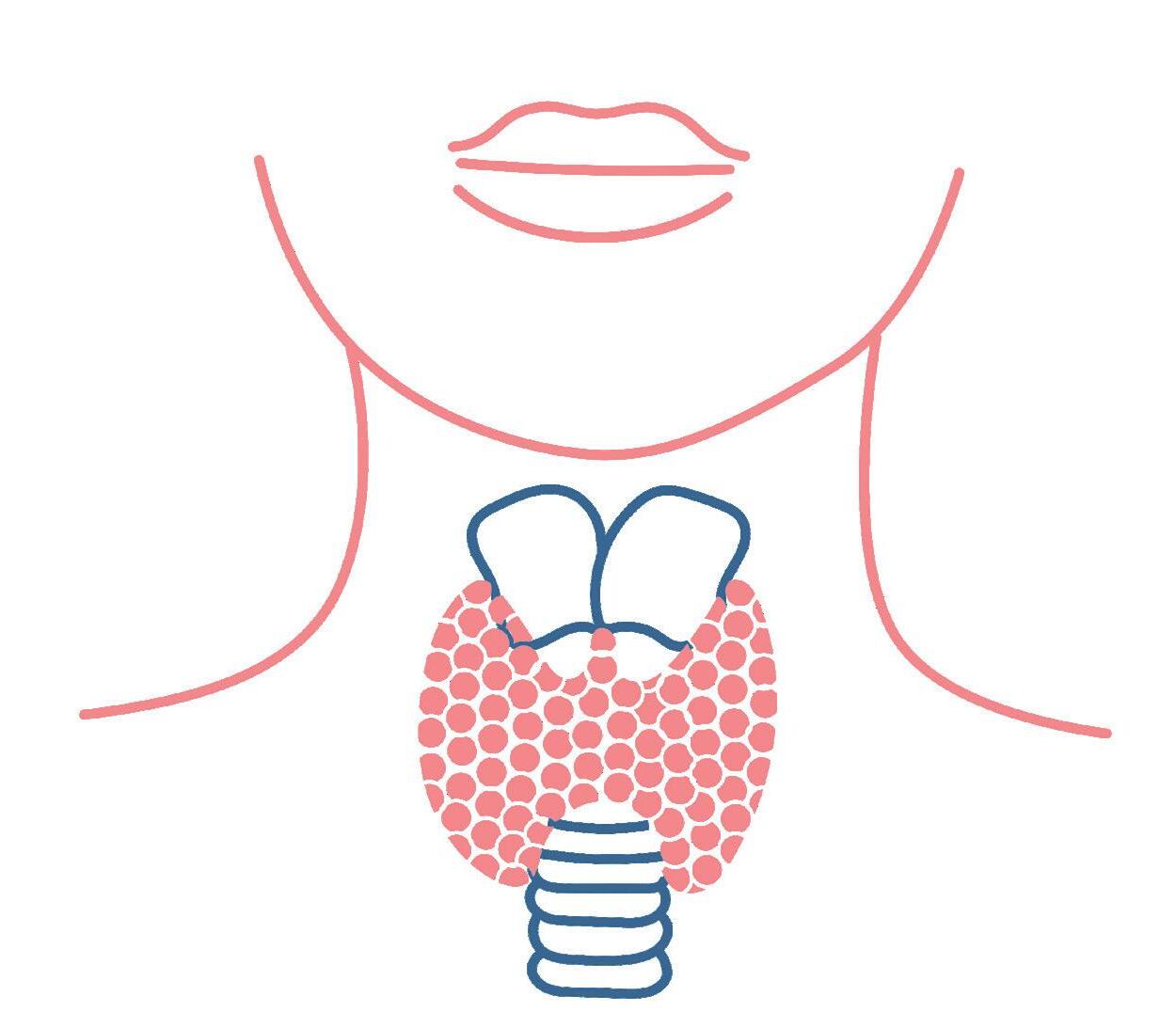
The thyroid, a small, butterfly-shaped gland in your neck, serves as the body’s thermostat for regulating metabolism. Sometimes the thyroid pumps out high or inadequate amounts of hormones.
In the case of an underactive thyroid, also called hypothyroidism, your body slows down. Symptoms include fatigue, forgetfulness, depression, heavier periods, dry hair and skin, mood swings, weight gain, intolerance to cold, hoarse voice, and constipation.
Hashimoto’s disease, another thyroid condition, results in the body producing antibodies that interfere with the release of thyroid hormones. It can lead to symptoms such as anxiety, depression, dry skin, cold intolerance, puffy eyes, muscle cramps and fatigue, constipation, and slow thinking.
Hormone therapy might be unavoidable to treat severe thyroid imbalances; however, the following three key nutrients support a healthy thyroid gland.
“Every one of my patients with thyroid disease has been iodine deficient,” notes Catherine Shanahan, MD, author of Deep Nutrition: Why Your Genes Need Traditional Food. She points out that this mineral is often a key part of thyroid health and recommends dulse seaweed as an iodine-rich food.
Those with unexplained fatigue or muscle pain, especially if there is cold intolerance, breast tenderness or cysts, weight gain, or constipation, might benefit from iodine supplements, says Jacob Teitelbaum, MD, author of Real Cause, Real Cure.
Be aware that too much iodine can aggravate the thyroid and worsen existing thyroid conditions, so consult with a healthcare practitioner and consider getting tested for iodine deficiency before you supplement.
This mineral plays a crucial role in the proper functioning of the thyroid gland, while research shows that too-low selenium intake increases the risk of thyroid disease. Historically, much of the selenium in American diets comes from animal-based foods, although another great source is Brazil nuts. Research shows that those with celiac disease are often deficient in selenium.
Selenium supplements can be beneficial for those with Hashimoto’s disease since they support the body’s manufacture and use of thyroid hormone.
Work with a healthcare practitioner to get the green light on selenium supplementation.
The mineral zinc plays a part in the production of thyroid hormones. Without enough zinc in your body, thyroid hormones are hard-pressed to do their job. Research shows when overweight women with hypothyroidism take zinc and selenium supplements, their thyroid health improves.
If you take a zinc supplement, make sure it’s properly balanced with copper to counteract zinc’s action of blocking copper absorption. ●
SELECTED SOURCES “Effect of selenium on thyroid autoimmunity and regulatory T cells in patients with Hashimoto’s thyroiditis . . . ” by Y. Hu et al., Clinical and Translational Science, 7/21 • “Iodine,” 11/5/24; “Selenium,” 4/15/24, National Institutes of Health, https://ods.od.nih.gov • “Nutrition and thyroid disease” by L.H. Duntas, Current Opinion in Endocrinology, Diabetes and Obesity, 12/1/23 • Personal communication: Catherine Shanahan; Jacob Teitelbaum • “A concise review of Hashimoto thyroiditis (HT) and the importance of iodine, selenium, vitamin D and gluten on the autoimmunity and dietary management of HT patients . . . ” by M.I. Liontiris and E.E. Mazokopakis, Hellenic Journal of Nuclear Medicine, 1–4/17 • “Selenium and thyroid diseases” by F. Wang et al., Frontiers in Endocrinology (Lausanne), 3/24/23

A recent observational study found that people with hypothyroidism (underactive thyroid) were 80 percent more likely to develop dementia than those that did not have thyroid issues. The study, which involved over 7,000 people newly diagnosed with dementia, did not find a correlation between dementia and hyperthyroidism (overactive thyroid).
“While more studies are needed to confirm these findings, people should be aware of thyroid problems as a possible risk factor for dementia and therapies that could prevent or slow irreversible cognitive decline,” said study author Chien-Hsiang Weng, MD, MPH, of Brown University.
Weng noted that thyroid disorders may also contribute to dementia symptoms that may be reversible with proper medical treatment.
SELECTED SOURCES “Thyroid disorders and dementia risk” by D.R. Wieland et al., Neurology, 7/6/22 • “Thyroid problems linked to increased risk of dementia,” American Academy of Neurology, www.AAN.com, 7/6/22
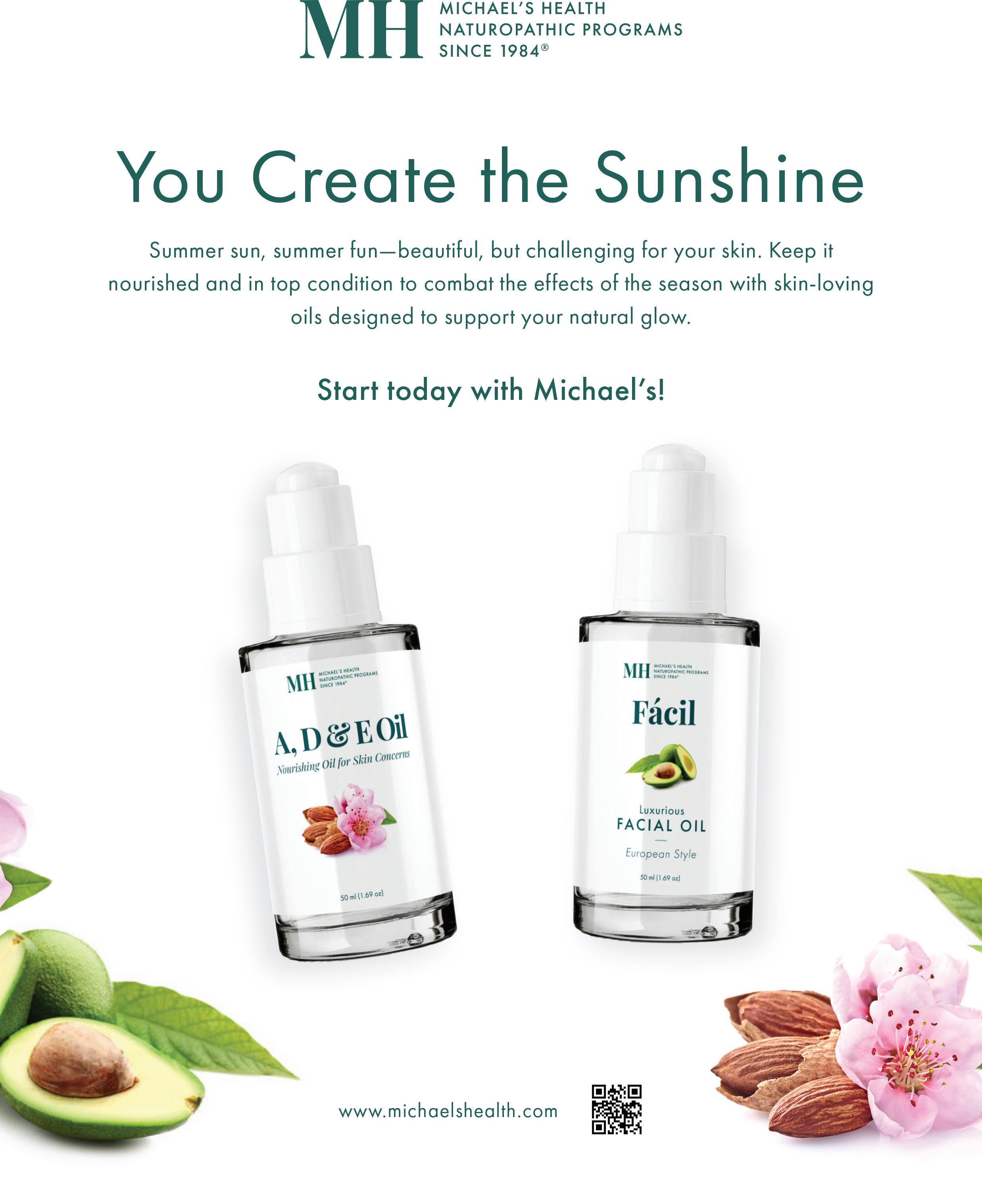
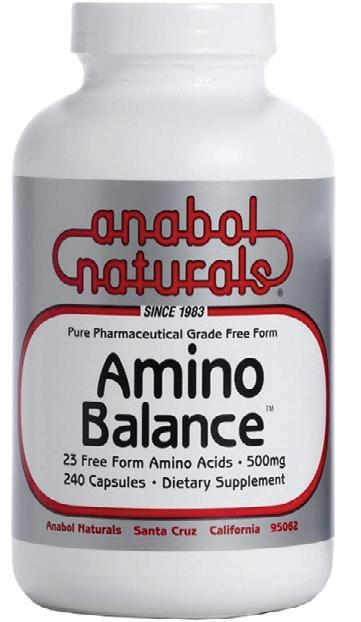
Anabol Naturals Amino Balance
For athletic performance and muscle support.*
Supplies 23 free form amino acids.
Pure pharmaceutical grade.
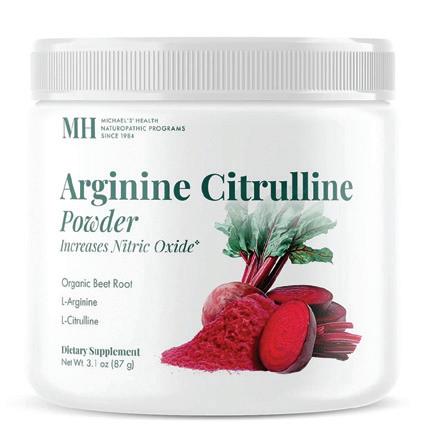
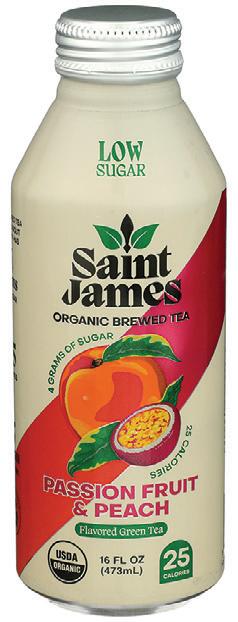

Saint James Passionfruit & Peach Green Tea
Organic green tea flavored with tropical passion fruit and peach nectar.
Refreshing and light flavor. Only 25 calories and 4 grams of sugar per container.
No artificial flavors or sweeteners.
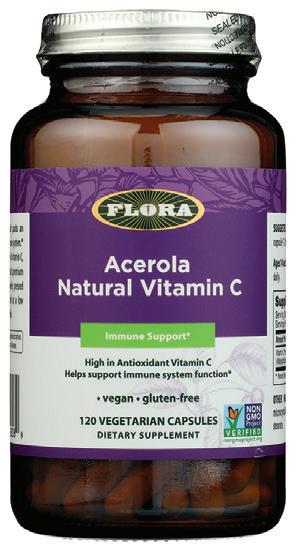
Paragon Plus™ Algae Based Calcium
Supports bone strength and density.*
Sourced from Aquamin Icelandic mineralized red algae.
Supplies calcium, magnesium and more than 72 trace minerals.
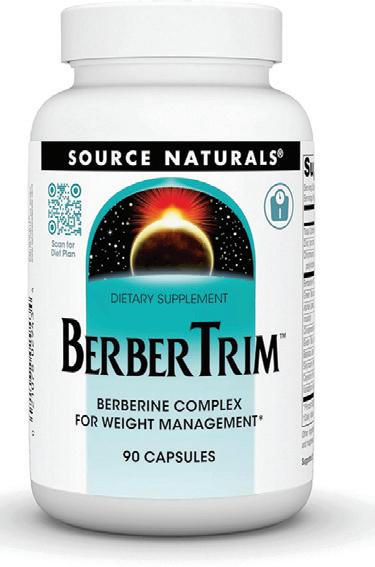

Paragon Plus™ Energy Source Multi
Support for overall health and vitality.*
Daily multivitamin with minerals and high potency B vitamins.
Includes nourishing green foods, fruit and vegetable concentrates.
Michael’s Health Arginine Citrulline Powder
Increases nitric oxide, enhancing blood flow.*
Arginine supports detoxification.*
Includes beet root for maximum benefits.
Flora Acerola Natural Vitamin C
High in antioxidant vitamin C. Helps support immune system function.*
Made with acerola cherries.
Source Naturals BerberTrim
GLP-1 support and weight management.*
Berberine + cinnamon, green tea, banaba leaf and other support ingredients.
With the provided diet plan, this formula can help balance healthy carbohydrate and insulin levels.*
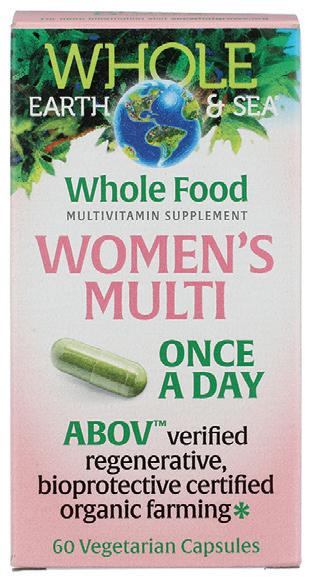
Natural Factors
Whole Earth & Sea Women’s Multi Once a Day
Supports overall health and vitality.*
Combines organic whole foods with meaningful levels of nutrients for the unique needs of women.*
Once daily formula.
